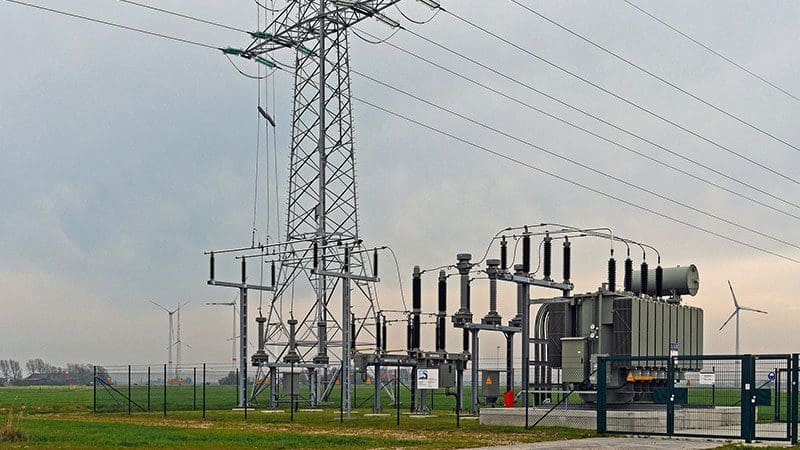Avoiding the Issues
Because most of the grid is congested, locational pricing is proposed to direct investment to less-congested parts of the grid and thereby minimise grid reinforcement during the energy transition. The debate appears not to be whether or not to implement it at massive scale, but whether to do so regionally, zonally or nodally. (Nodal pricing is different prices for each node, i.e. substation; zonal is broader-brush and regional is self-explanatory, broader still.)
But this is a way of avoiding the issue, which is network constraints preventing the construction of clean energy assets – whether they be generation or storage. Most forecasters predict that the grid will have to at least triple in size (e.g. Breakthrough Energy, McKinsey) unless renewables are connected through storage of sufficient scale and duration. And see the blog below for the hazards of locational pricing.
Locational Signals
There are some minor benefits from locational pricing. Many plants (especially large and highly capable ones) can deliver benefits outside their immediate zone. For example, large-scale storage in Scotland can alleviate congestion in England. Locational signals should remunerate such benefits.
Providing locational signals are good, up to a point. Beyond that point they sub-divide today/s 50GW market (and tomorrow/s 80-150GW market) into a myriad little sub-markets, rather like supplying consumers with only family-owned corner shops and no supermarkets: it reduces choice and resilience in the supply chain while greatly inflating costs.
There is even some consideration of implementing locational pricing at distribution grid level. The same disadvantages would merely be replicated at smaller scale: at transmission level you’re (by analogy) closing all supermarkets to supply all needs from corner shops; at distribution level you’re closing the corner shops to supply all needs from a barrow.
Liquidity in Electricity Markets
Liquidity is created by having large markets without market-distorting special financial instruments. Large markets mean that locational pricing must be small. Avoiding special financial instruments means that the market / system / regulatory design must incentivise all the right things, as above.
Locational signals also need to be flexible: many needs identified at one location may be addressed by solutions at an entirely different location. Just as the Dounreay power station on the Scottish north coast required grid reinforcement right down to Leighton Buzzard in Hertfordshire, so also intermittency or changing demand can lead to congestion far away. Consider an offshore wind farm: its intermittency means that the entire grid must be sized for peak generation, including overcoming constraints tens or even hundreds of miles away; but by adding storage between the wind farm and the grid, that intermittency can be eliminated at source, avoiding such distant reinforcement.
Additional to all that is the fact that such locational markets would enormously increase the cost and administrative burden of managing them, as alluded to in the discussion on nodal pricing; the same would apply, to a lesser extent, to zonal pricing.
Effects of locational signals on the market
In the power industry, profits are typically in the low single digits of percent of turnover. Therefore small locational signals will have a big effect on plant location for those that (like batteries) can choose their locations freely. However, most (e.g. consumers, pumped hydro) cannot choose their locations freely, so should not be destroyed by excessive locational pricing.
If locational pricing is large (i.e. more than ~5% of turnover of a plant), then effectively a single 55GW market will be shattered into a huge multiplicity of mini-markets in which large plants cannot compete as they would dominate. The effect would be like closing all supermarkets, and replacing them with a myriad corner shops: costly, ineffective, reducing choice resilience and flexibility, and a retrograde step that would effectively take us to the early years of the grid (or, if locational pricing is >25% of turnover) to before the existence of the grid. The clock would be turned back by 80 years or more.
This implies that a small degree of regional (less zonal and very little nodal – too small) pricing could be introduced to renewable support schemes and/or capacity adequacy mechanisms and network access, but not to wholesale or imbalance pricing.
The markets should be kept large and integrated, or you’re going back a hundred years in the development of the grid.
Locational Pricing and Investability
The most effective way of delivering locational signals, to drive efficient investment and dispatch decisions of generators, demand users, and storage is by keeping such pricing small, to <5% of turnover, keeping the scale larger (mostly regional, some zonal and very little nodal) and by focusing it on renewable support schemes and/or capacity adequacy mechanisms and network access, but not to wholesale or imbalance pricing.
Market participants will be as responsive as they can be to small locational signals, because profits are typically a small percentage of turnover. On the other hand, many plants (consumers, generation, pumped hydro, CAES etc.) have little or no locational choice and would merely be penalised for existing. And as locational pricing changes, so legacy plants would be penalised for having responded to previous signals. This would destroy all plants’ investability, even in locations where they are needed now.
What would happen to a plant that builds in a location because it’s incentivised to do so, then the grid in that location becomes congested so its locational pricing is increased? Then the plant would be penalised for having responded to prior signals. If those signals are large, they could be enough to bankrupt the plant, merely by regulatory whim. This uncertainty could destroy the financial security and therefore investability of plants even in locations where the grid would rather encourage them.
The only advocates of these are National Grid, a few academics and a very few businesses whose technology can be implemented anywhere and whose business models game the locational incentives system. Moreover, investment even in those last would be stopped when they realise that a plant built in a given location because it’s encouraged by locational pricing now may yet be rendered uneconomic by future changes in locational pricing as investment is made into the network.


